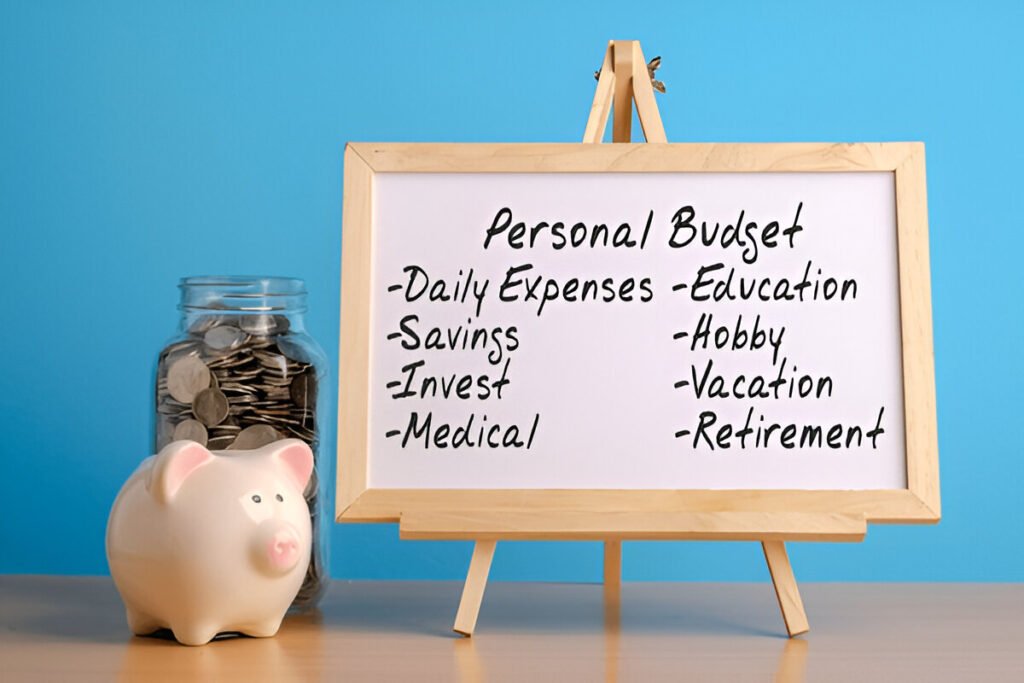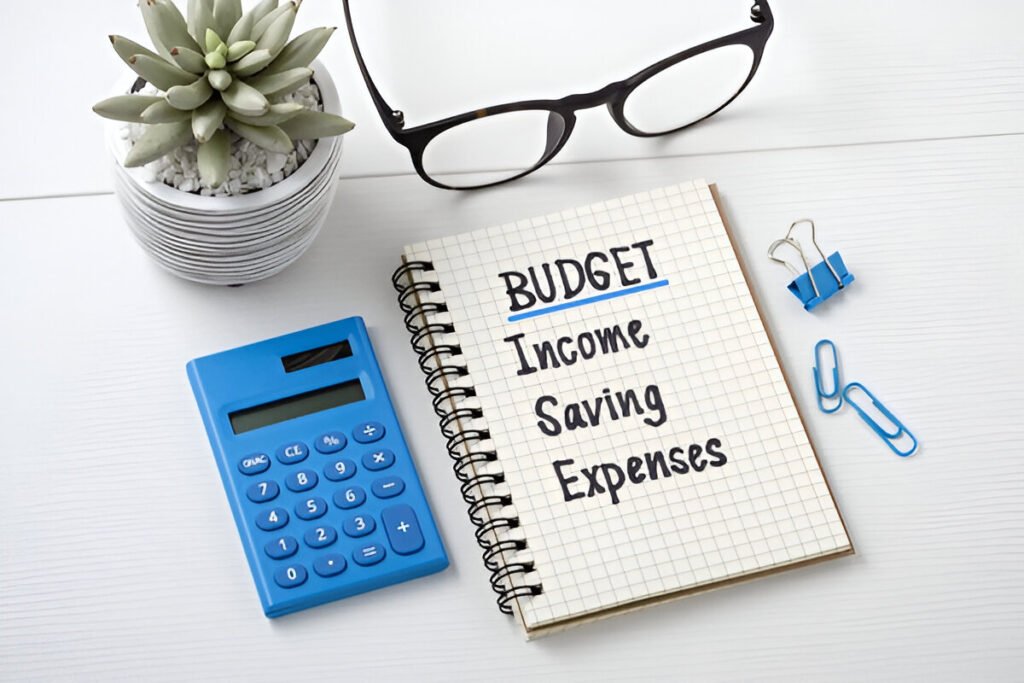Budgeting is crucial for effective personal finance management, offering control over your money, reducing financial stress, and aiding in better decision-making. By living within your means, avoiding debt, and saving for future goals, a well-structured budget can pave the way to financial independence. Despite common misconceptions that budgeting is restrictive or only necessary for those facing financial challenges, it is, in fact, a valuable tool for everyone, regardless of income level. It helps ensure wise spending and can ultimately save time and stress by preventing financial surprises.
Understanding and defining your financial goals is key to successful budgeting. Long-term objectives include investing for retirement, purchasing a home, or clearing small debts. Short-term goals, on the other hand, usually last a year or fewer. or funding a child’s education. These goals guide your budgeting decisions and help prioritize spending and saving. It’s also important to align your budget with your values. For example, if travel is a priority, allocating more funds to that category—even at the expense of other areas like dining out—ensures that your spending supports your overall happiness and life satisfaction. To create your budget, this guide will provide you with the details you need.
Preparing to Budget
To prepare for budgeting, start by gathering all your financial information, beginning with your income sources. This includes your primary job, side gigs, freelance work, investment income, alimony, or other income streams. Understanding your total income is crucial as it sets the boundaries for your spending and saving. The next step is to list all of your regular expenses, which include things like rent or mortgage payments, utilities, insurance, loan payments, and subscriptions. These fixed costs are non-negotiable and must be prioritized in your budget. Additionally, consider irregular expenses like car maintenance, medical bills, gifts, and annual subscriptions. Although these don’t occur monthly, planning for them by setting aside money each month can prevent financial strain when they arise.
After gathering your financial data, analyze your current spending habits by tracking all your expenses for at least a month. Document every purchase, no matter how small, to get a clear picture of your spending behaviour. Once you have this data, categorize your expenses into groups like housing, food, transportation, entertainment, and debt repayment. This categorization helps you see how much of your income is allocated to each area, making it easier to spot potential adjustments. Finally, review these categories to identify spending patterns—areas where you consistently overspend or are surprised by how much you’re spending. Recognizing these patterns is crucial for making informed adjustments to your budget and aligning it with your financial goals.

Creating the Budget
List your income as the first step in creating a budget. Begin with fixed income sources, such as a salaried job or a pension, as these represent consistent and predictable amounts you can rely on each month. This forms the foundation of your budget, providing a clear picture of the money available to you. For those with variable income, like freelance work or side jobs, estimate a conservative average based on past earnings. It’s crucial to be realistic with these estimates to avoid overestimating your available funds, which could lead to financial shortfalls.
Next, list your expenses, starting with fixed expenses like rent, utilities, and insurance, which are non-negotiable and recur every month. These essential costs should be prioritized in your budget, as they are necessary for maintaining your daily life. Monthly variations may occur in spending such as groceries, entertainment, and eating out. While some variable expenses, like groceries, are necessary, others are discretionary and can be adjusted according to your financial situation. Differentiating between discretionary spending (non-essential items like hobbies or luxury purchases) and non-discretionary spending (essential costs like housing and groceries) helps you identify areas where you can cut back if needed.
Lastly, prioritize your needs over your wants while spending money. Begin by covering essential expenses such as housing, utilities, groceries, and transportation. Once these needs are met, allocate money toward wants and savings. The 50/30/20 guideline, allocates 50% of your income to necessities, 30% to wants, and 20% to savings one budgeting tactic you may use is debt reduction. Other methods include zero-based budgeting, where every dollar is assigned a specific purpose, or the envelope system, where cash is allocated to different spending categories. Most importantly, make sure you always save some money each month, preferably for an emergency fund. This fund acts as a financial cushion for unexpected expenses, helping you avoid reliance on credit or loans during emergencies.
Implementing the Budget
When implementing your budget, the first step is to choose a budgeting tool that suits your needs. The traditional pen-and-paper method involves manually recording your income and expenses, which is simple and requires no technology but can be time-consuming and less efficient for ongoing tracking. Alternatively, spreadsheets like Excel or Google Sheets offer more flexibility, allowing you to use formulas to calculate totals and track changes. These are highly customizable and can be tailored to fit your specific budgeting needs. For those who prefer automation, budgeting apps like Mint, YNAB (You Need a Budget), or EveryDollar provide real-time updates by syncing with your bank accounts, categorizing expenses, and offering additional features like goal tracking and spending alerts.
After choosing your tool, be sure to keep an eye on your spending limit by checking it frequently. Begin with daily tracking, recording every expense as it occurs, which helps prevent small purchases from accumulating unnoticed. Conduct weekly reviews to compare your actual spending against your budget, making adjustments as needed to stay on track. Finally, at the end of each month, review your entire budget, identifying any categories where you overspent or underspent, and adjust your budget accordingly for the next month. This ongoing review process allows you to refine your budget over time, ensuring it remains accurate and effective in helping you achieve your financial goals.
Adjusting and Refining Your Budget
Adjusting and refining your budget is a crucial part of ensuring its long-term effectiveness. Begin by regularly reviewing and analyzing your budget to identify areas of overspending. If you see that some categories often go above their allotted amounts, find out if this is an isolated incident or a recurrent problem. If it’s the latter, you may need to reallocate funds from other areas or cut back on non-essential spending. It is important to keep in mind that your budget is flexible and can be altered to better suit your actual spending patterns.
Unexpected expenses are inevitable, so it’s important to prepare for them by building an emergency fund. This fund should ideally cover 3-6 months’ worth of living expenses and be kept in an easily accessible account. Having this cushion allows you to handle emergencies like medical bills or car repairs without disrupting your financial stability. Additionally, build flexibility into your budget to accommodate life’s unpredictability. When unexpected expenses arise, don’t hesitate to reallocate funds from discretionary categories to cover these costs, ensuring your financial plan remains resilient.
Finally, continually set and revise your financial goals as your situation changes. Short-term adjustments may be necessary if you experience changes like a pay raise, a new job, or an increase in expenses. Make sure your budget is still appropriate for your present situation by reviewing it on a regular basis. Similarly, review and update your long-term financial goals as you achieve milestones. By setting new goals and adjusting your budget accordingly, you can continue progressing toward financial independence and maintaining a healthy financial outlook.

Tips for Successful Budgeting
For successful budgeting, it’s important to avoid common pitfalls by finding the right balance between rigidity and flexibility. A budget should serve as a guide rather than a strict set of rules, allowing for adjustments as needed. However, being too lenient can lead to overspending, so it’s essential to maintain discipline. Furthermore, a lot of individuals forget about sporadic costs like Christmas gifts or yearly insurance premiums, which might ruin your budget if they aren’t budgeted for. To avoid this, calculate these expenses on an annual basis, divide the total by 12, and set aside a portion each month to ensure you’re prepared when these costs arise.
Staying motivated is key to maintaining your budget over time. Celebrate little victories, like hitting a savings goal or successfully adhering to your budget for a month. These celebrations don’t have to be extravagant—even small rewards can reinforce positive financial behaviour and keep you motivated. Moreover, consider sharing your budgeting goals with an accountability partner or joining a budgeting community. Having someone to check in with or share your progress can provide valuable support, encouragement, and advice, making it easier to stay committed to your financial plan.
Continuous education is another essential aspect of successful budgeting. Enhance your financial literacy by reading books, listening to podcasts, or taking courses on personal finance. The more you understand about money management, the more effectively you can create and stick to your budget. Additionally, keep up with financial trends and changes in the economy, such as shifts in interest rates or new financial products. Staying informed helps you make smarter decisions and adjust your budget as needed to stay aligned with your financial goals.
Conclusion
Consistent budgeting is essential for maintaining financial health, as it keeps you continuously aware of your financial situation and allows you to make informed decisions. Budgeting is a continuous process that needs to be reviewed and adjusted on a frequent basis to stay effective. You can keep on track, adjust to changes in your financial situation, and make sure your financial plan is in line with your objectives by going with your goals.
Starting small is key to building the budgeting habit—don’t wait for the perfect time to begin. Start with a simple plan and modify it as necessary. Over time, a well-managed budget provides numerous benefits beyond just controlling your finances. It offers peace of mind, reduces financial stress, and helps you achieve your financial goals, leading to a more secure and fulfilling life. Budgeting is a continuous process that needs to be reviewed and adjusted frequently to stay effective. You can keep on track, and adjust to changes in your Your chances of enjoying these benefits will increase the earlier you start.





